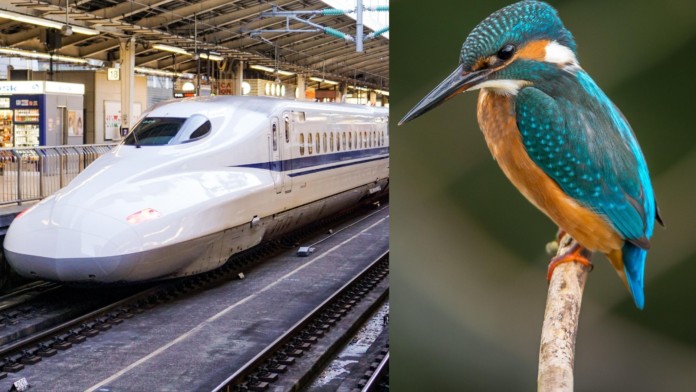Biomimicry Frontiers is helping several firms around the world to apply biomimicry principles to solve business challenges. In this article, the authors discuss a few case studies of their work with a few of their clients. They show how biomimicry is the best approach to mitigate climate crisis, help businesses earn profits and improve quality of people’s lives
Biomimicry offers endless opportunities and possibilities in sustainable business strategies because it invites us to draw on the world’s oldest and most sustainable teacher: Mother Nature. Biomimicry is a practical approach for learning to harness ideas, processes, and system strategies for how to thrive on a dynamic planet. It recognizes that Nature has been refining the best solutions for how to thrive on this planet for billions of years. And that when we can shift our collective perception from human exceptionalism and truly see the genius of Nature, then we can start to create designs, communities, and businesses that are truly sustainable.
The most popular examples of biomimicry is Velcro, which was inspired by the hooking of a burr, or Interface Carpets, which, among many things, made carpet tiles inspired by the entropy of a forest that dramatically reduced carpet waste, and infused circular economics in their factories to drive profit margins significantly higher.
The key to biomimicry is that it represents a shift in our perspective, recognizing that Nature may hold some of the most efficient, sustainable and beautiful solutions to our biggest challenges. The problem is, most companies don’t recognize this, or more importantly, know how to effectively do it.
At Biomimicry Frontiers, our mission is to make it better, naturally. From years of experience learning, teaching and practicing biomimicry, we have found practical ways to draw on nature’s genius and that often, the biggest barrier to success in biomimicry is creativity – the ability to release preconceptions, silos, and biases in order to creatively abstract bold ideas from nature and then harness existing assets to make those incredible ideas real.
Biomimicry is a concept that pushes the status quo of design thinking and as a result, a lot of our work is about engaging with contrasting ideas both within different levels of organizations and within our team. We welcome diverse thinking, challenging ideas and unique visions for the future. And it is through our unique approach that Fast Company named us a “World Changing Idea” in 2019.
Biomimicry and Business
We truly believe that biomimicry is the most effective way to mitigate climate change. First, it can show us the technologies for how to create more stable and sustainable ecosystems. But it can also highlight the true value of intact ecosystems.
a) When we think about cooling our buildings, air conditioning is often the first solution that comes to mind. However, nature has managed to cool for billions of years without using any fossil fuels. An elephant for example has cracks in its skin that look like wrinkles. These micrometer-wide cracks retain 10 times more moisture than a smooth surface, helping the animal regulate its body temperature through evaporative cooling. We emulated this strategy to create a wall for a residential project in India that cools the house, eliminating the need for any additional energy input.
b) Our relationship with nature transforms, once we see the value, recognizing that nature is the ultimate model and mentor for how to thrive on the planet. When we truly see its genius, it becomes harder to see it only as a resource to extract from and instead, also something to learn from.
The ecological services that nature provides are the most undervalued tool for mitigating climate change. For example, ecosystems offer unprecedented carbon sink technologies. Destroying these productive systems not only reduce our ability to learn from and emulate them, they also destroy significant allies in our fight against climate change.
By 2050, the loss of key ecosystem services could cost the world $479 billion per year, and this is a conservative estimate. A recent study argues that nature-based solutions represent “over one-third of the cost effective climate mitigation needed between now and 2030 to stabilize warming to below 2 degrees Celsius”, which can reduce the need for less proven technologies like bio-engineering and other techno-centric approaches.
What we learn from biomimicry is that nature may already hold the secret to our species survival and that all we need to do is look. However, when we elevate and obsess about our own species’ ingenuity, it can be easy to ignore, or forget, the 3.8 billion year old ideas that exist outside. Nature already knows engineering, chemistry, and manufacturing. It knows agriculture, community organization, art and communications. It has been refining these ideas long before our species has arrived (and effectively decimated these elders).
Using nature as a model and mentor, Biomimicry Frontiers has been fortunate to work on harnessing and practically applying nature’s genius to the built environment.
Net Positive Eco-Building
In India, Biomimicry Frontiers helped a landowner push the boundaries of habitat design. Partnering with B+H Architects, we successfully applied biomimicry and biophilia to a house design. The process included an in-depth four-stage investigation and design; researching the local conditions and organisms, biological abstraction and problem disruption, biomimetic and biophilic design scenarios and finally, multiple iterations towards a final concept. We used a unique metric for determining design success in that we measured the ecological performance of the site based on two scenarios:
- As if we did nothing and let the land naturally evolve
- As if there were no was no human settlement in the area and the land was left to its original state (i.e. old growth forest)
We then measured the success of our building to these two scenarios in terms of how much carbon it could sequester, or how much air and noise pollution it could reduce, rain it could store and manage, and how much oxygen and soil it contributed to the site. We wanted to see if the house could function as efficiently as a forest. The goal, to shift the lens of human built environments as disruptions that are a contribution to place.
Canada’s first Circular Food Economy
In Canada, Biomimicry Frontiers successfully partnered with the City of Guelph in their bid for $10M from Industry Canada to lead Canada’s first Circular Food Economy. We wanted to help the community realize that a circular economy is a natural economy. In nature, “waste” streams are opportunities for reinvention and redistribution.
In our project, we took the metaphor of nature a step further and learned from ecological “patch dynamics” that seeks to eliminate waste streams and inspire local, circular businesses in the unique neighbourhoods throughout the city. We call the project a “City of Villages” and are attempting to highlight the local assets, flows, and opportunities, nested within a larger system.
Indoor Agriculture Technology Integration
Nature’s proven efficiency is best seen through biomimicry-based technologies. Especially, at the form level. In 2018, Biomimicry Frontiers was hired by Thrive Cannabis to incorporate biomimicry into its practices. This included developing a sustainable land-use strategy and incorporating multiple sustainable technologies into its processes and systems.
We partnered with Pax Scientific to include custom-made impellers, inspired by seashells and lilies, that more efficiently mixed the irrigation tanks. These shell-like mixers can move 10 million gallons of water with the electricity of only two light bulbs. They do this because they work with the fluid and its natural movement rather than trying to push it, like traditional propellers.
Nature moves in spirals and the Pax impeller highlights this. We also designed a Living System wastewater treatment system with John Todd Ecological, which functions as a complex wetland. As a result of this project, cost savings resulted from reduced water usage and the environmental impact on groundwater recharge was reduced.
The most important thing we can do is recognize that in times of disruption there are opportunities to plant seeds for a new evolution, a new ecosystem. Despite the collective trauma, financial disruptions and overwhelming tragedy the world is currently facing, biomimicry shows us that we can reframe how we solve problems. It inspires hope. And it allows us to recognize that the problems we face today may already have a solution in nature; that they will not be solved by the same thinking that created them. Biomimicry in business is about reflection, contemplation, and realizing that we are not alone. That we are just a very young species and that the call to action is now.












